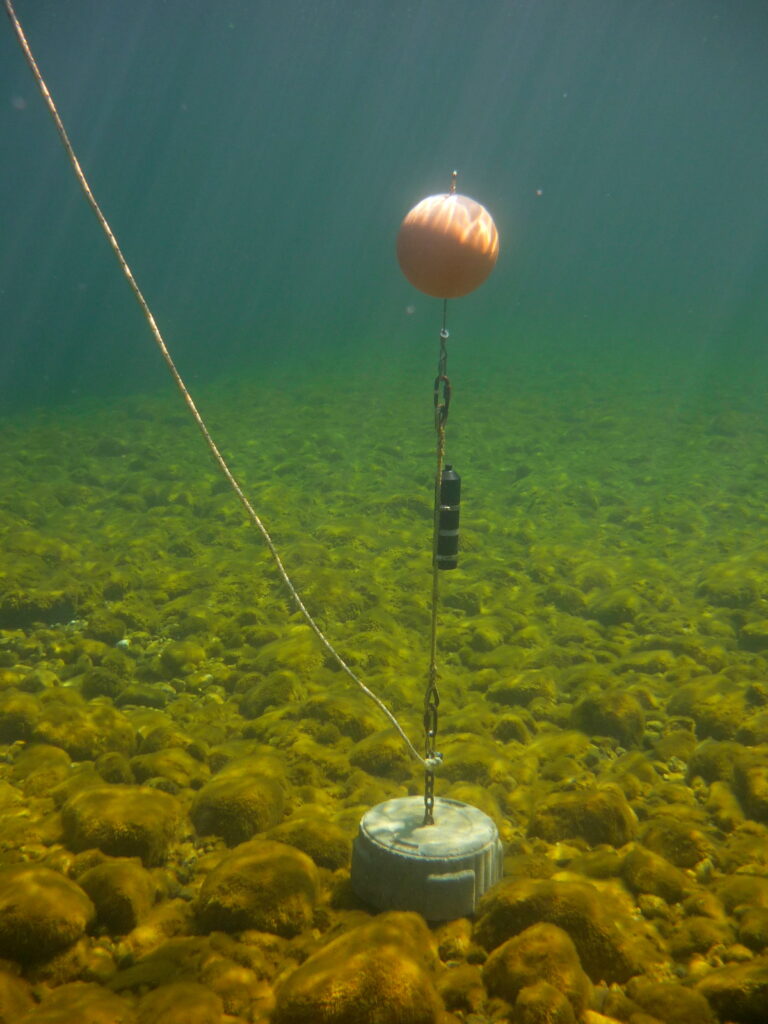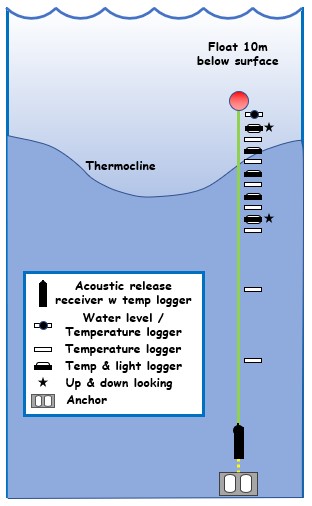Published first in the GLOS newsletter
Tim Johnson is a food web guy, but he’s also a lake monitoring guy.

Serving in the Ontario Ministry of Natural Resources and Forestry, Johnson is a longtime aquatic researcher studying the food web of Lake Ontario, including fish—species like lake whitefish, chinook salmon, lake trout, and others—and how the changing lakes affect them.
Johnson is part of the Great Lakes Acoustic Telemetry Observation System (GLATOS), a region-wide network of researchers collecting data on tagged fish. GLATOS partners maintain hundreds of acoustic receivers deployed on the lakebed to record when a tagged fish swims by.
Fish movement around the lake is driven, in part, by water temperature and food availability. And temperature and other resources like plankton can change quickly when events like seiches occur, driving water from one end of the lake to another and altering the temperature layers, or “stratification.”
However, understanding how these dynamics work in the whole lake, year-round, is difficult, especially since most of the monitoring equipment that measures temperature or light at depth, like on buoys, is removed every fall to avoid winter damage.
But Johnson and his colleagues had an idea. He and researchers from five other groups in the U.S. and Canada applied to GLOS for a Smart Great Lakes mini-grant to deploy 13 arrays of temperature and light sensors onto existing moorings within the GLATOS network in Lake Ontario.

The cross-border, cross agency team consisted of researchers from:
- Ontario Ministry of Natural Resources and Forestry
- University of Toronto Scarborough
- Fisheries and Oceans Canada
- U.S. Geological Survey Lake Ontario Biological Station
- U.S. Fish & Wildlife Service Lower Great Lakes Fish & Wildlife Conservation Office
- Queens University
In the summer of 2021, with support from a mini-grant, the team successfully deployed all 13 arrays. In the summer of 2022, they downloaded the first batch of data and re-deployed arrays for another year. The project team committed to continuing deployment for at least three years, and plans to continue for the foreseeable future.
And right now, the GLOS team is working with Johnson to make the data publicly available on Seagull.

The resulting dataset is unique in its geographic scale, spanning a large portion of Lake Ontario, as well as its year-round coverage, says Johnson.
“We had the infrastructure there, and so this was just a very efficient way, as in shiptime and labor using existing infrastructure, of capturing data that has largely been absent in the Great Lakes,” said Johnson. “We’ll have a lake-wide understanding of thermodynamics year-round, in winter, which is a very rapidly emerging topic. It’s quite exciting in that way.”
And, while he has some general interest in analyzing the data, he’s looking forward to seeing what the research community will do with this new dataset once it’s public.
Data will be discoverable soon via Search on Seagull.
